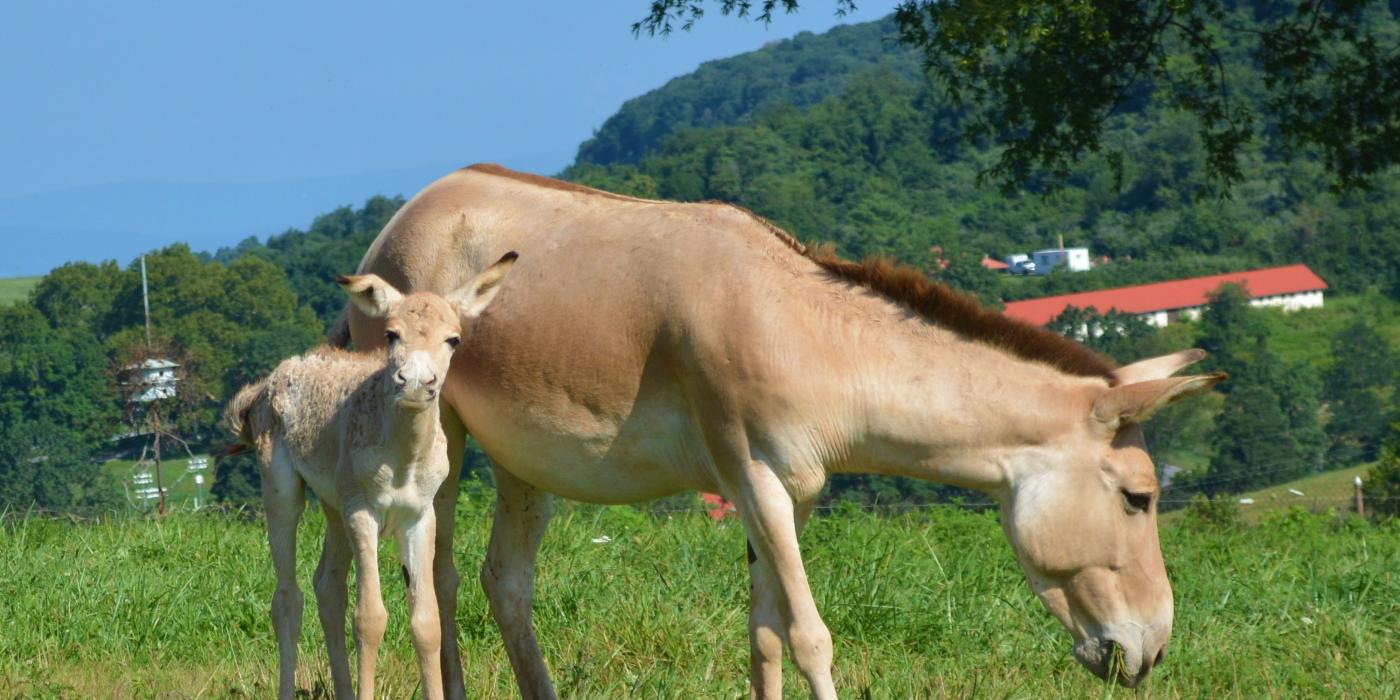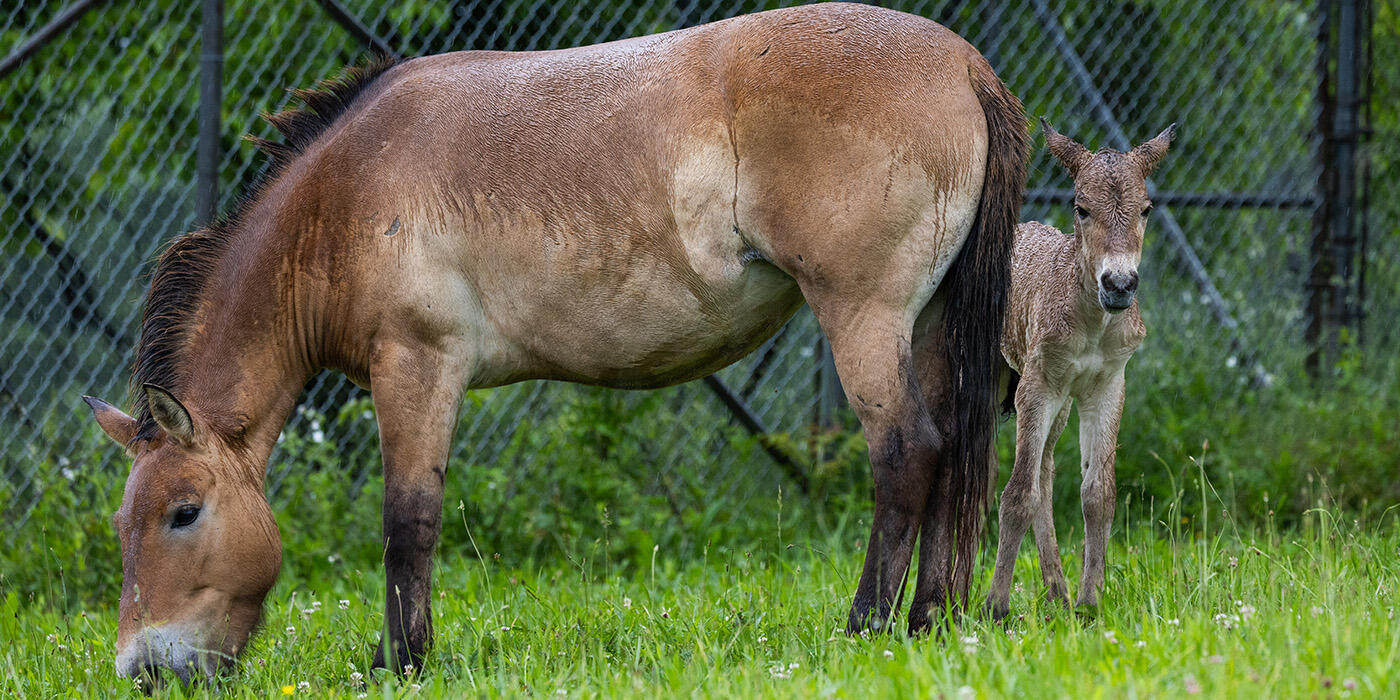Getting to Know the Persian Onager Foals
The end of the summer has been very busy at the Smithsonian Conservation Biology Institute, because we have two new members in our Persian onager herd! We are excited that our second and third foals have arrived and did not have any complications during parturition (birth). Both the foals were born Aug. 25. Dorri’s filly (girl) was born early in the morning before we arrived at the barn, and Farah’s colt (boy) was born around 11 a.m. Both are doing great! All three of our mares, Dorri, Farah and Sayeh, were maiden mares, or first-time moms, and we are relieved that the birthing process went smoothly for them.
In the beginning, both Farah and Dorri were very protective of their little ones and made sure that the other herd members didn’t get too close. That is normal behavior for new onager moms, but they soon became more comfortable with their foals spending time with other members of the herd.
Although the mares were very round at the end of their pregnancies, they were back to their pre-pregnancy weights soon after giving birth. Part of that weight loss is from the foal itself. Having a gestation period of a full year means that foals weigh approximately 50 pounds at birth. They waste no time in learning to nurse and usually start quickly after birth.
Producing milk requires a lot of energy and calories from the mares, but it gets the foals the nutrients they need to grow. It does not take long for the foals to double their weight, and they continually grow for the first few years of their life. On average, onagers weigh about 510 pounds. So, the foals have a long way to go until they have matured.
Related Species:


